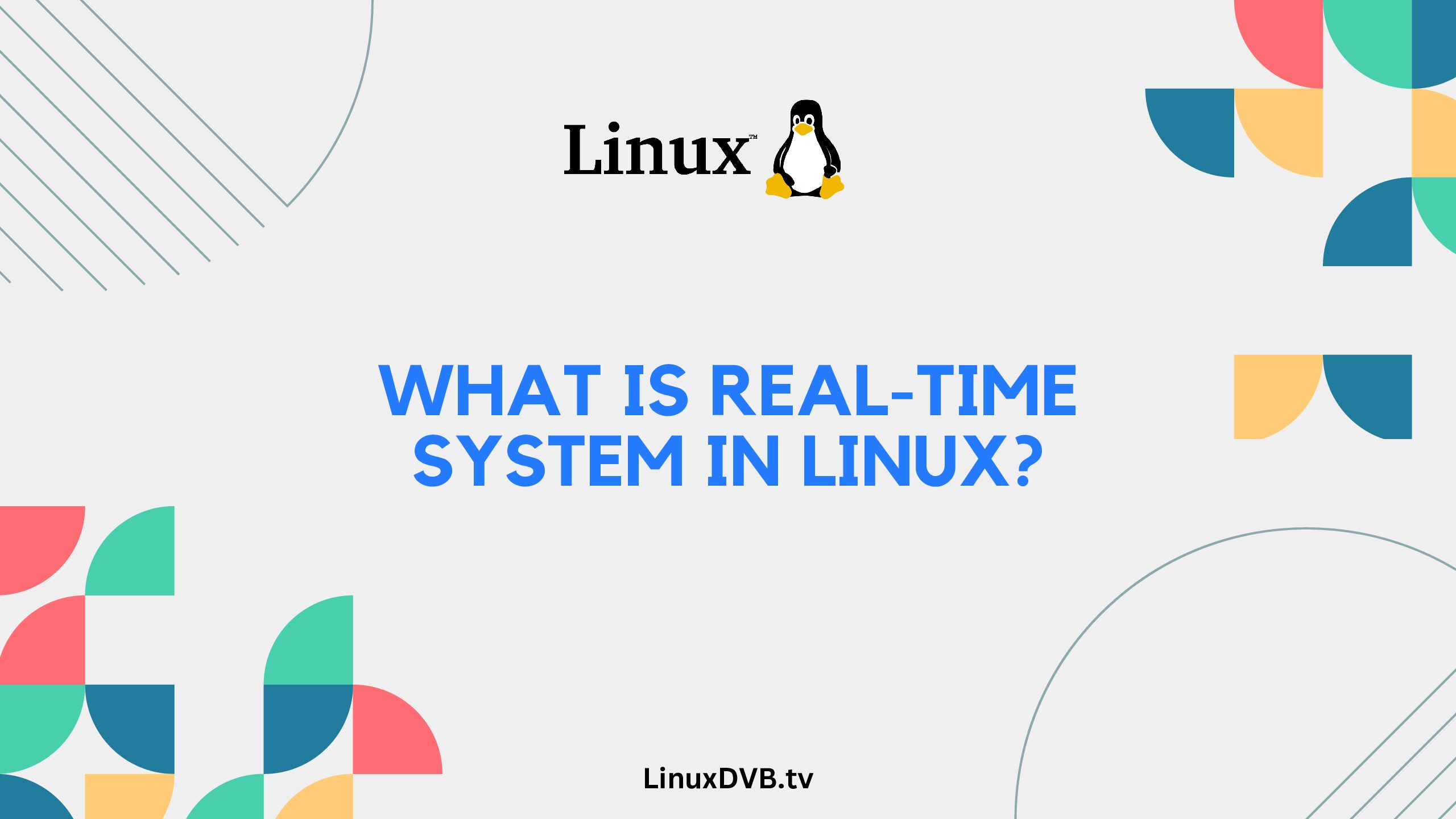Introduction
In the ever-evolving world of technology, real-time systems play a crucial role in ensuring efficient and responsive operations. This article dives deep into the realm of real-time systems in Linux, exploring their significance, functionalities, and applications.
Table of Contents
What is Real-Time System in Linux?
Real-time systems refer to computer systems that process and respond to inputs immediately, with minimal delay. In the context of Linux, a real-time system ensures that tasks are executed within strict time constraints, guaranteeing timely responses. These systems are commonly used in scenarios where timely and accurate execution of tasks is imperative, such as industrial automation, robotics, medical devices, and multimedia applications.
The Core Concepts of Real-Time Systems
Real-time systems in Linux are built upon several core concepts:
1. Determinism
Real-time systems operate deterministically, meaning that the execution time of tasks is predictable and consistent. This predictability is essential for meeting stringent timing requirements.
2. Priority-Based Scheduling
Tasks in a real-time system are assigned priorities, determining the order in which they are executed. Higher-priority tasks take precedence over lower-priority ones, ensuring that critical tasks are completed on time.
3. Interrupt Handling
Interrupts are crucial in real-time systems, allowing the system to promptly respond to external events. Linux employs interrupt handling mechanisms to ensure that critical tasks are addressed without delay.
4. Deadline Management
In real-time systems, tasks are associated with specific deadlines. Meeting these deadlines is vital for the proper functioning of the system. Linux employs various scheduling algorithms to manage task deadlines effectively.
Benefits of Real-Time Systems in Linux
Real-time systems offer numerous benefits in the Linux environment:
1. Precision and Accuracy
Real-time systems ensure precise and accurate execution of tasks, making them ideal for applications that require consistent timing.
2. Reliability
The deterministic nature of real-time systems enhances system reliability, as tasks are executed predictably, reducing the risk of system failures.
3. Responsiveness
Real-time systems enable instantaneous responses to events, making them suitable for applications where rapid reactions are critical.
4. Optimized Resource Management
Linux real-time systems efficiently allocate system resources to tasks based on their priorities, maximizing system performance.
Usage Scenarios of Real-Time Systems in Linux
Real-time systems find applications in various industries and domains:
1. Industrial Automation
Real-time systems control manufacturing processes, ensuring precise and timely execution of tasks in industrial settings.
2. Automotive Industry
In the automotive sector, real-time systems manage critical functions such as engine control, anti-lock braking systems, and airbag deployment.
3. Medical Devices
Medical equipment, such as heart monitors and infusion pumps, rely on real-time systems to provide accurate and timely readings.
4. Multimedia Applications
Real-time systems enable smooth playback of multimedia content, ensuring seamless audio and video synchronization.
Frequently Asked Questions (FAQs)
Can real-time systems only be used in Linux?
No, real-time systems are not exclusive to Linux. They are employed across various operating systems to meet specific timing requirements.
What is the role of priority-based scheduling in real-time systems?
Priority-based scheduling ensures that critical tasks are given higher priority, ensuring their timely execution.
Are there different types of real-time systems?
Yes, real-time systems can be classified into hard real-time and soft real-time systems, based on the severity of timing requirements.
How does Linux manage interrupt handling in real-time systems?
Linux uses interrupt service routines (ISRs) to manage interrupt handling, ensuring prompt responses to external events.
Are real-time systems only used in technical applications?
While real-time systems are widely used in technical fields, their applications extend to diverse industries, including healthcare, entertainment, and transportation.
What is the significance of deadline management in real-time systems?
Deadline management ensures that tasks are completed within their specified timeframes, preventing performance degradation and system failures.
What is a real-time system in Linux?
A real-time system in Linux is one that can guarantee a specific maximum response time for its tasks.
Can Linux be a real-time operating system?
Linux can be configured to exhibit real-time behavior, but it’s not a dedicated real-time operating system (RTOS).
Can Linux be an RTOS?
Linux can be adapted to function as a real-time operating system (RTOS) through various modifications and patches.
Is Linux considered an RTOS?
Linux is not traditionally considered a real-time operating system (RTOS), as it is designed primarily for general-purpose computing.
Can Linux be used as an RTOS?
Linux can be used as a real-time operating system (RTOS) with proper configuration and real-time extensions, although it might not match the determinism of specialized RTOS platforms.
Conclusion
Real-time systems in Linux are at the heart of critical applications that demand precise timing and responsiveness. By maintaining determinism, priority-based scheduling, and efficient interrupt handling, these systems ensure that tasks are executed promptly and accurately. From industrial automation to multimedia applications, the impact of real-time systems is far-reaching, enhancing the reliability and performance of various domains.

